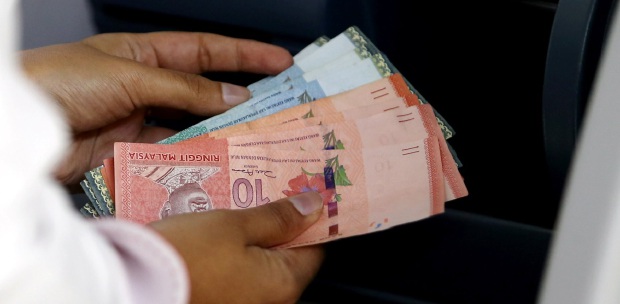THE South Korean series, Squid Game, epitomises the grim and harsh reality endured by lower-income groups, especially in relation to indebtedness.
Although South Korea's underclass citizens aspires to raise their economic status, they often face barriers in achieving higher disposable income due to soaring house prices and limited upskilling and job opportunities.
During the past five years, apartment prices in South Korea have surged 70 per cent, pushing the average price of an apartment in Seoul beyond US$1 million.
The number of unemployed or underemployed young people in South Korea has also grown every year since 2017.
And, even though South Korea has the highest share (i.e., at 68 per cent) of young adults of age 25-34 years with tertiary education of all OECD countries as of 2019, the unemployment rate among youths reached an all-time high at 27.2 per cent in January 2021.
In showing the living environment of one character, Gi-hun, for example, the Squid Game highlighted that he had to stay in a semi-basement apartment with scant sunlight and confined space.
Gi-hun's gambling problem made his financial situation dire. He faced a massive debt of 160 million won (US$137,000) to loan sharks and another 255 million won (US$218,490) to banks.
In reality, Gi-hun's case is not isolated or unique in both the context of South Korea and Malaysia. Both countries have had a rise in household debts during recent years.
In fact, South Korea and Malaysia are like twins in this regard — since the former has the highest household debt in Asia with Malaysia trailing behind in second place.
During the pre-pandemic era, the South Korean household debt-to-gross domestic product (GDP) ratio was 87.3 per cent as at the end of 2016. As of end-June 2021, the South Korea Financial Services Commission stated that it rose to 104.2 per cent.
On the other hand, Malaysian household debt rose from RM1.27 trillion in 2020 to RM1.34 trillion as of the end-June 2021.
Although the latest household debt-to-GDP ratio (i.e., 89.6 per cent as of end-June 2021) is lower than end-2020 (i.e., 93.2 per cent), some Malaysians who could not find a job or experience loss of income might have to borrow more money to make ends meet.
Compare this household debt-to-GDP ratio to that in developed countries such as Japan (63.9 per cent), France (65.8 per cent), Germany (57.8 per cent), the United Kingdom (89.4 per cent) and the United States (79.2 per cent) as of end-June 2021.
Among the reasons for rising household debts in South Korea and Malaysia are gambling losses, overspending on credit cards, university loan payments, unemployment, higher interest rates on earlier loans, soaring house prices and shop rentals.
The Covid-19 pandemic also revealed the vulnerability of the social protection system, particularly among self-employed individuals.
As the earnings among the self-employed can be highly variable, they may not have the ability to commit to annual premiums or may not have enough credit rating scores to gain access to loans from the banks.
When they cannot access loans from formal financial institutions, their last resort is to borrow money from moneylenders with high or exorbitant interest rates.
The Employees Provident Fund (EPF) Chief Strategy Officer, Nurhisham Hussein, estimated that only three per cent of Malaysians could afford retirement due to the massive Covid-related withdrawals (i.e., i-Sinar, i-Lestari and i-Citra) over the past two years.
While these withdrawal measures provided some financial relief to members during the pandemic, this have inevitably led to 6.1 million contributors now having less than RM10,000 in their EPF accounts. Out of the 6.1 million contributors, over half (i.e., 3.6 million) of them have less than RM1,000 in their EPF savings account.
With less savings available for them to spend within the next few months, the EPF anticipated a significant drop in the percentage of
s meeting the basic savings threshold (RM240,000 at age 55) from 36 per cent in 2020 to an estimated 27 per cent by the end of 2021.
When EPF contributors exhaust all of their savings, they will fall deeper into poverty and debt. They might not even afford to buy daily necessities to sustain their living.
Moreover, the EPF predicted that members will have to work an extra four to six years to rebuild their savings. As Malaysians might find it hard to find another decent job at their official retirement age of 60, they have to deplete savings or secure loans to start small businesses.
As rising household debts and depleting retirement savings are fast become priority policy issues that have been made acute by the pandemic, EMIR Research proposes some policy recommendations:
1. Incorporate financial literacy as part of the education curriculum from primary school. While teachers educate pupils on the difference between income, savings and expenses, parents should show good examples for their children — identifying what to spend first (prioritise).
For instance, if children require a laptop for online learning, then the item becomes an essential item — spending priority — rather than e.g., a toy or even a piano.
Parents could also advise their children to purchase clothes or shoes only when there are year-end sales. While enjoying discounted prices, the children will also have extra money to spend on other items such as food and books.
2. Stimulate new employment with a focus on the lower M40 and the B40. Those who have lost jobs should receive support from employment services and reskilling programmes that target their entry or re-entry into work.
After the training, the government should continue monitoring their progress for a minimum of six months to ensure the programmes have long-lasting positive effects.
3. Increase the statutory retirement age to 65 together with the re-employment (i.e., employment beyond the statutory retirement) age to 67 — as part of the long-term plan to accumulate retirement savings.
4. The government and government-linked entities (Socso, EPF) should come up with a holistic and systematic assessment on the current social protection/security policy environment to improve welfare among the self-employed and elderly, while ensuring they are protected during retirement.
5. Eliminate bureaucratic processes and delays that prevent the lower M40 and B40, self-employed and elderly from accessing the benefits they urgently require.
There must now be a sense of urgency on the part of the government and stakeholders to work out a strategy and roadmap towards achieving sustainable retirement savings for all and viable job opportunities that cuts across age groups.
The writer is Research Analyst at EMIR Research, an independent think tank focused on strategic policy recommendations based on rigorous research





